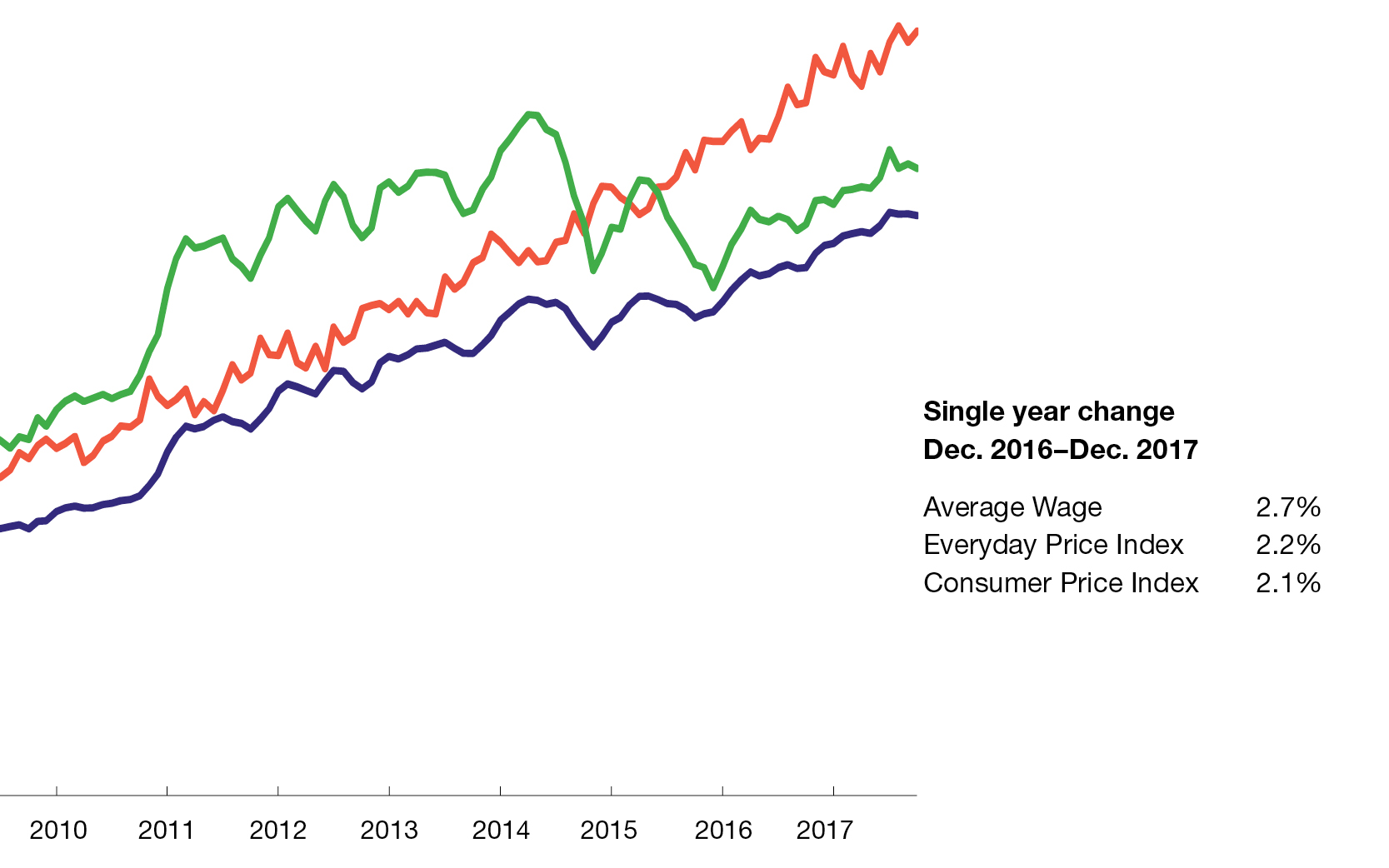What Are the Best Job Destinations for College Grads?
Our research is based on migration patterns and city characteristics from 2005 to 2014. Out of that research we developed the 2016 index revealing these key findings about where young grads choose to move:
Our top-five ranked cities are Washington, D.C.; Iowa City, Iowa; San Francisco; San José, Calif.; and Boston.
Cities—no matter their size—with a vibrant, young, well-educated population attract other young, well-educated grads.
A strong economic climate attracts the young and well educated.
Racial and ethnic diversity is high on the list of priorities for college grads.
Among our key findings, the most important factor appears to be “like-to-like” migration—young college grads move where they will find an established cohort of other well-educated young professionals.
Millennials on the move
Migration is a large part of American history, from pioneers moving westward to immigrants and farmers moving to industrial cities. Likewise, migration is a large part of modern American culture, with families moving from cities to suburbs or exurbs, entrepreneurs seeking lower-rent urban neighborhoods, and young migrants setting out for their post-collegiate careers. According to a recent AIER study (https://www.aier.org/research/drop-job-related-moves-suggests-more-efficient-economy) greater efficiency in the U.S. labor market may be contributing to the long-term decline in U.S. migration. Despite this trend, young people, such as new college grads, are continuing the tradition of moving to seek new opportunities.
Today’s 22– 35 year-olds are part of the group that’s been dubbed “millennials.” They share a desire to migrate, and they value a work-life balance. We found in our study that certain major metros are particularly popular with these young professionals. For those who want to work at a digital start-up and who appreciate a laid-back vibe, the San Francisco Bay area is attractive. Those seeking work in public policy and who value an international culture find that Washington, D.C., has a powerful pull. And for those who want to work in medical research or are part of the Red Sox Nation, Boston is a draw. But we were also interested in understanding what accounts for migration to Iowa City, Dallas, and Salt Lake City.
We used our research to develop a web tool to help young people who are thinking about a move (www.aier.org/edi). In addition, we believe this research will interest those of you who have a college grad in your life and civic leaders who want to understand what makes a place attractive to well-educated millennials.
What we learned
Our ranking of employment destinations is based on quality of life, work opportunities, and the presence of other young people. We found nine factors that account for the differences in a metropolitan area’s ability to attract young, well-educated migrants. Among the nine, already having a young, well-educated population is the most important. This phenomenon is referred to as like-to-like migration. The young and well-educated move to places where they’ll find a big contingent of the population that shares these characteristics. Our top cities in each size category—Washington, D.C.; San José, Calif.; Ann Arbor, Mich.; and Iowa City, Iowa—all boast that more than half of their residents over the age of 22 have at least a bachelor’s degree, compared with only about 30 percent for the entire U.S. population. Civic leaders seeking to attract new businesses, particularly ones that provide services to millennials, or who are interested in hiring millennials, will want to market their demographic profile if it includes a large population of the young and well-educated.
Next among the factors that account for a metro area’s ability to attract the young and well-educated is having a strong economic climate (low unemployment and high labor force participation). We don’t know from our study whether young people are moving to new cities in search of a job or if they are moving after already receiving a job offer. Young people without a job offer would be wise to search for places with low unemployment rates and high labor force participation, since these are good indicators that employers are likely to be hiring. Civic leaders looking to attract young, well-educated residents would do well to focus economic development efforts on fostering the quality of life that well-educated millennials value, such as public and private gathering places and walkability.
Racial and ethnic diversity is the next most important factor in attracting young, well-educated migrants to a metropolitan area. Once again we can’t speak to the motivations of migrants. The importance of the diversity factor may simply reflect the demographic changes in the country coupled with the like-to-like migration phenomenon. That is, since the younger generation is far more racially and ethnically varied than the older generation, we may simply be observing that metropolitan areas with diverse racial and ethnic sub-populations continue to attract more members of diverse racial and ethnic groups.
How cities ranked
Major metros (more than 2.5 million residents)
Among the largest metropolitan areas, the highest-ranked cities are those with a strong economy (higher wages, lower unemployment, and higher labor-force participation for young people with a college degree). Washington, D.C.; San Francisco; Boston; and Seattle in the top 10 fit this profile. Typically, these are places with the highest rents, which reflect how desirable these cities are, particularly for those interested in digital and medical technology jobs (San Francisco and Boston), politics and policy (Washington, D.C.), or the all-compelling qualities of hipness and natural beauty (Seattle). Denver and Minneapolis are two top-ranked, major metros that provide better value for housing, with rents that are far closer to the median for all metropolitan rental markets in the country. Los Angeles, Chicago, San Diego, and Atlanta are ranked in the middle of our largest metropolitan areas since their economic environments present challenges for young people. These metro areas are characterized by unemployment rates that are higher and labor force participation rates that are lower than average for cities of their size. Not surprisingly, LA ranked at the top for arts and entertainment, reflecting that “the industry” (that is, Hollywood) plays a large role in defining that metropolitan region.
Top 10 major metros
1. Washington, D.C.
2. San Francisco
3. Boston
4. Denver
5. Minneapolis
6. New York
7. Seattle
8. Chicago
9. Baltimore
10. Dallas
Midsize metros (1 million to 2.5 million residents)
The highest-ranked cities among our midsize metros have large shares of well-educated young people, plenty of arts and entertainment venues, and high concentrations of bars and restaurants. These are places such as Austin, Texas; Raleigh-Durham, N.C.; and Portland, Ore. Our top-ranked city in this second tier of metro areas is San José, Calif., the “capital” of Silicon Valley. San José’s ranking is overwhelmingly due to its economic strength and uncommon social scene. Its low rankings for bars, restaurants, entertainment, and the arts may be a reflection of Silicon Valley’s techies spending social time in private corporate spaces rather than in those “third spaces”—neither home nor work—that contribute to a lively social scene in the most favored cities.
Top 10 midsize metros
1. San José, Calif.
2. Austin, Texas
3. Raleigh-Durham, N.C.
4. Columbus, Ohio
5. Portland, Ore.
6. Hartford, Conn.
7. Milwaukee, Wis.
8. Kansas City, Mo.
9. Salt Lake City, Utah
10. Richmond, Va.
Top 10 major metros
1. Washington, D.C.
2. San Francisco
3. Boston
4. Denver
5. Minneapolis
6. New York
7. Seattle
8. Chicago
9. Baltimore
10. Dallas
Midsize metros (1 million to 2.5 million residents)
The highest-ranked cities among our midsize metros have large shares of well-educated young people, plenty of arts and entertainment venues, and high concentrations of bars and restaurants. These are places such as Austin, Texas; Raleigh-Durham, N.C.; and Portland, Ore. Our top-ranked city in this second tier of metro areas is San José, Calif., the “capital” of Silicon Valley. San José’s ranking is overwhelmingly due to its economic strength and uncommon social scene. Its low rankings for bars, restaurants, entertainment, and the arts may be a reflection of Silicon Valley’s techies spending social time in private corporate spaces rather than in those “third spaces”—neither home nor work—that contribute to a lively social scene in the most favored cities.
Top 10 midsize metros
1. San José, Calif.
2. Austin, Texas
3. Raleigh-Durham, N.C.
4. Columbus, Ohio
5. Portland, Ore.
6. Hartford, Conn.
7. Milwaukee, Wis.
8. Kansas City, Mo.
9. Salt Lake City, Utah
10. Richmond, Va.
Small metros (250,000 to under 1 million residents)
Many of the top-ranked cities in our small-metros grouping achieved their status because a land-grant or public research university heavily influences their economy, social scene, and quality of life. Ann Arbor, Mich., the number-one metro area in this group, may be the quintessential college town, but with a population of over 350,000, it’s not really a town. Cultural life there is enhanced by the presence of the University of Michigan, which contributes to Ann Arbor’s population of highly educated young people, research activities that support private industry, racial and ethnic diversity, and places to gather. This is true for other cities in this category across the country, such as Lincoln, Neb., home of the University of Nebraska; Fort Collins, Colo., home of Colorado State University; Santa Cruz, Calif., home of the University of California at Santa Cruz; and Gainesville, Fla., home of the University of Florida.
Top 10 small metros
1. Ann Arbor, Mich.
2. Bridgeport, Conn.
3. Lincoln, Neb.
4. Fort Collins, Colo.
5. Honolulu, Hawaii
6. Trenton, N.J.
7. Santa Cruz, Calif.
8. Norwich, Conn.
9. Omaha, Neb.
10. Portland, Maine
Smallest metros (under 250,000 residents)
Big universities also make their presence known among the top-ranked cities in our smallest-metros group. Places such as Iowa City, Iowa; Lawrence, Kan.; Champaign-Urbana, Ill.; College Station, Texas; Columbia, Mo.; Ithaca, N.Y.; and Bloomington, Ind., are all home to land-grant and major research universities, which strongly influence the economy and quality of life. Relatively low rents and low unemployment also add to their appeal.
Top 10 smallest metros
1. Iowa City, Iowa
2. Lawrence, Kan.
3. Bloomington, Ill.
4. Champaign-Urbana, Ill.
5. College Station, Texas
6. Columbia, Mo.
7. Burlington, Vt.
8. La Crosse, Wis.
9. Ithaca, N.Y.
10. Bloomington, Ind.
Why young people migrate – theory vs. reality
Economic theory has always turned to economic opportunity as the most powerful reason that people in the working-age population move. Furthermore, the school of thought within economics known as human capital theory helps us understand that those who invest the most in their education are most likely to expand the geographic range of their job search. Yet in 2015 when we inaugurated the EDI we discovered that quality-of-life factors as a group were more important than economic reasons in accounting for why cities were attractive to young, well-educated migrants. This may reflect the degree to which “real people” differ from “economic man.” Possibly we are capturing a desire by millennials to have a work-life balance that includes urban amenities and social appeal along with career and economic opportunities. Here’s what we found about these key factors affecting migration.
Strong economy is a lure
A metro area’s economic conditions reflect the strength of its economy and the challenges of finding work. We measured this with the unemployment rate, the labor-force participation rate, average earnings for college graduates, and the average rental cost of a two-bedroom apartment. Low unemployment rates and high labor-force participation rates are key components of a healthy economic system. A local economy that is not generating a steady stream of relatively high-value goods and services does not have the capacity to provide jobs and keep people employed. Furthermore, companies that are generating high-value goods and services have a greater capacity to pass along profits to workers in the form of higher wages.
Housing costs tend to be highest in the most desirable metro areas, as demand by well-paid workers pushes up prices. The disparity between wages and rents is greatest in places that attract renters and home buyers from outside the labor market, like New York, San Francisco, or Honolulu, all markets that attract wealthy owners of second (or third) homes who are not full-time residents.
Millennials want work-life balance
Our analysis supports the commonly held conception that millennials strive for a work-life balance. Just as they value flexible hours or professional development opportunities within the office, outside the office they seek opportunities for entertainment and accessibility to the city without needing to own a car. Multiple studies have directly linked commuting time to career happiness. Not having to own a car is an important concern for many millennials. It reflects their active, green lifestyle and is supported by the rising popularity of rideshare companies like Uber and Lyft.
Ease of access to a city also allows a resident to enjoy “third spaces,” or urban hangout spots separate from home or work. To measure these, we looked at the number of entertainment spots in an area. These are sports venues, museums, art institutions, and performing arts centers. We also accounted for bars and restaurants as another measure of third spaces.
Neighborhood diversity attracts
While economic conditions and quality of life provided by urban amenities are two pieces of the where-to-move puzzle, perhaps the most important question for young job-seekers remains: Who will their neighbors be? After accounting for city size, we included in our index a measure of racial and ethnic diversity and the proportion of the population with at least a college degree. The racial and ethnic diversity of a city correlates not only to its economic success but contributes to vibrancy, provides new opportunities, and reinvigorates public spaces. This is especially important to this generation, as almost half of millennials are members of a minority race or ethnic group themselves. Moreover, many civic and business leaders publicly express the value of a diverse and tolerant region.
How to use this index and our web tool
If you’re thinking of making a move, our EDI ranking, described in a slide show on our website (www.aier.org/edi), reflects the recent moves of young people and the characteristics that make cities attractive to them. Although our findings account for most young migrants’ moves, we recognize that individual preferences play a strong role in the decision-making process. The “Employment Destinations Tool” (EDT) on our website (www.aier.org/edi) lets you choose factors that you value the most. It allows us to most accurately assist you with a personalized answer to the question: Where do I go from here? )
To learn about our methodology and the data we used, see our technical note:
www.aier.org/research/edi-methodology
[pdf-embedder url=”https://www.aier.org/wp-content/uploads/2016/04/RB_May_2016_EDI.pdf“]





